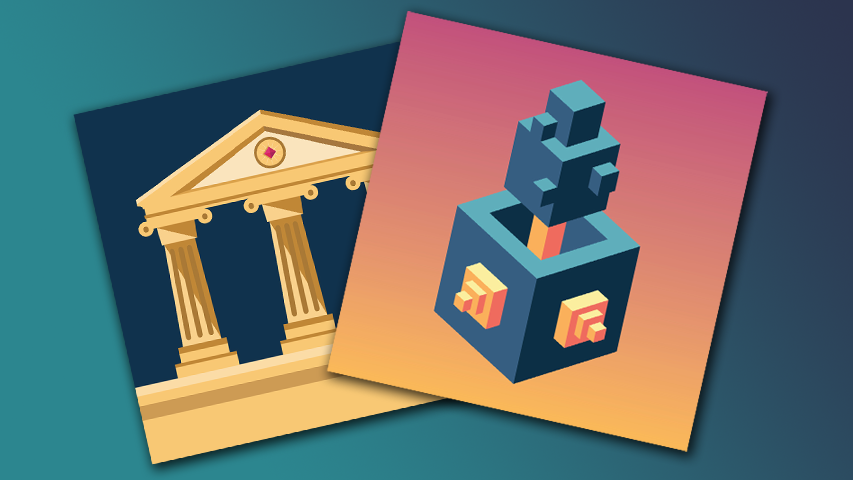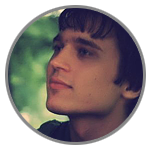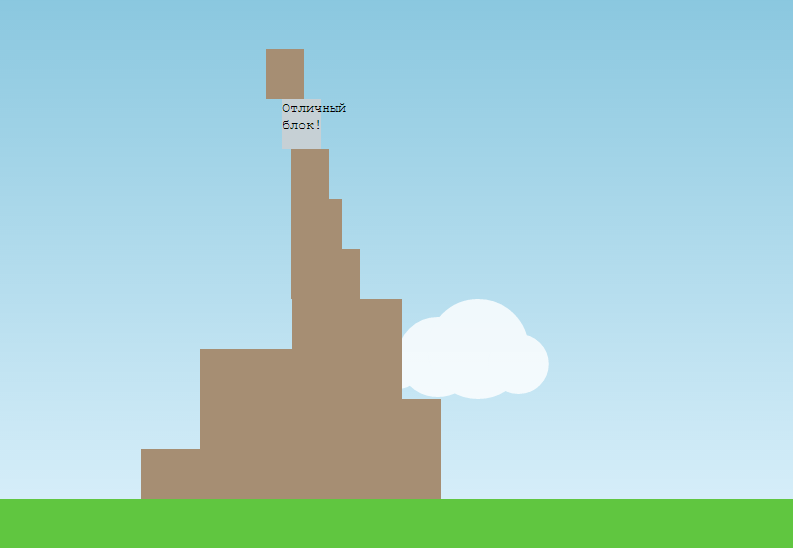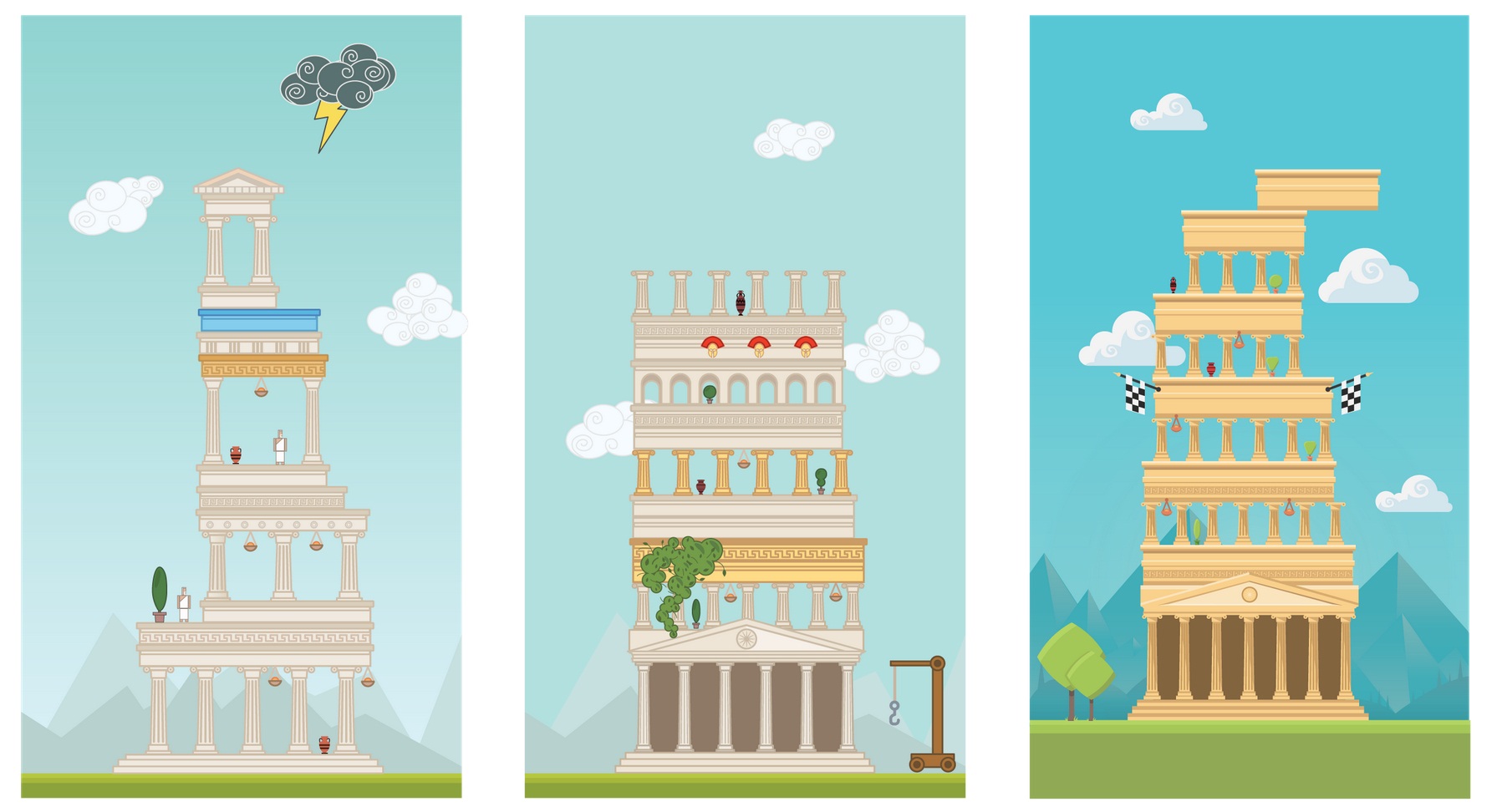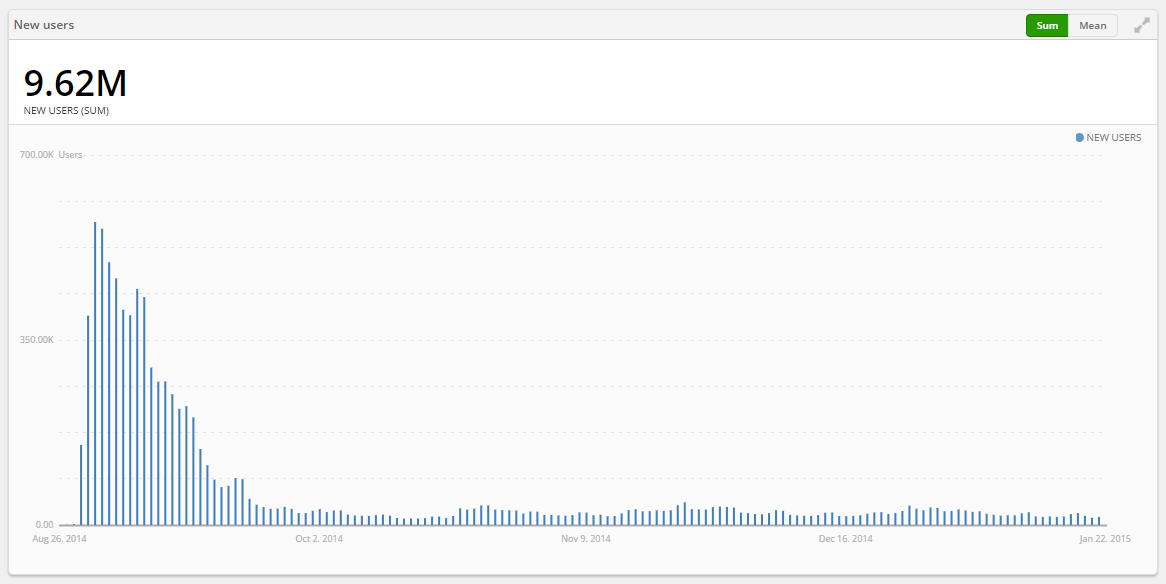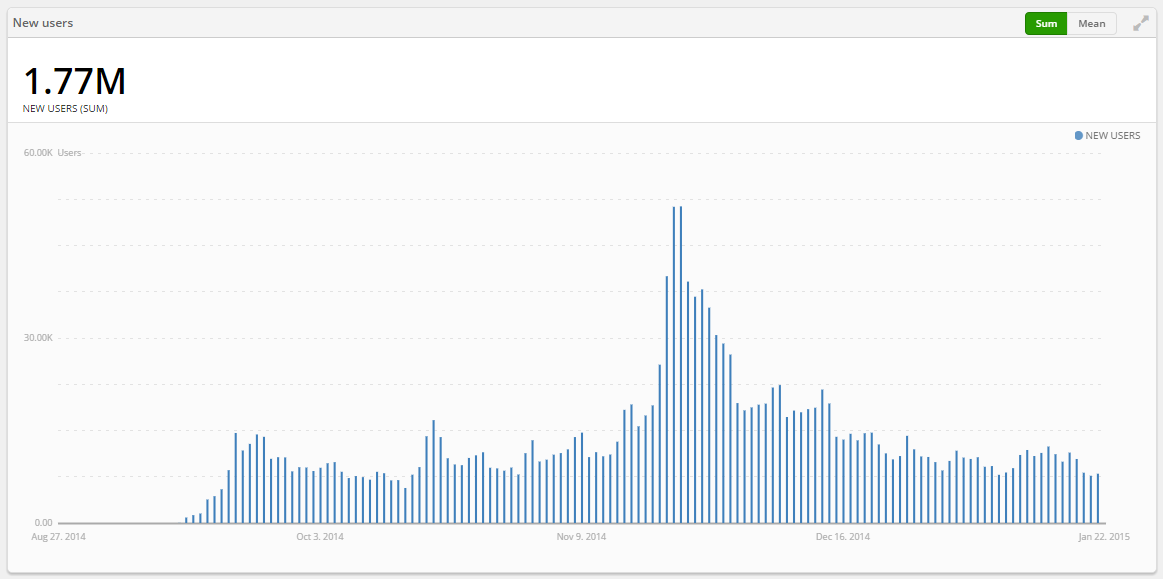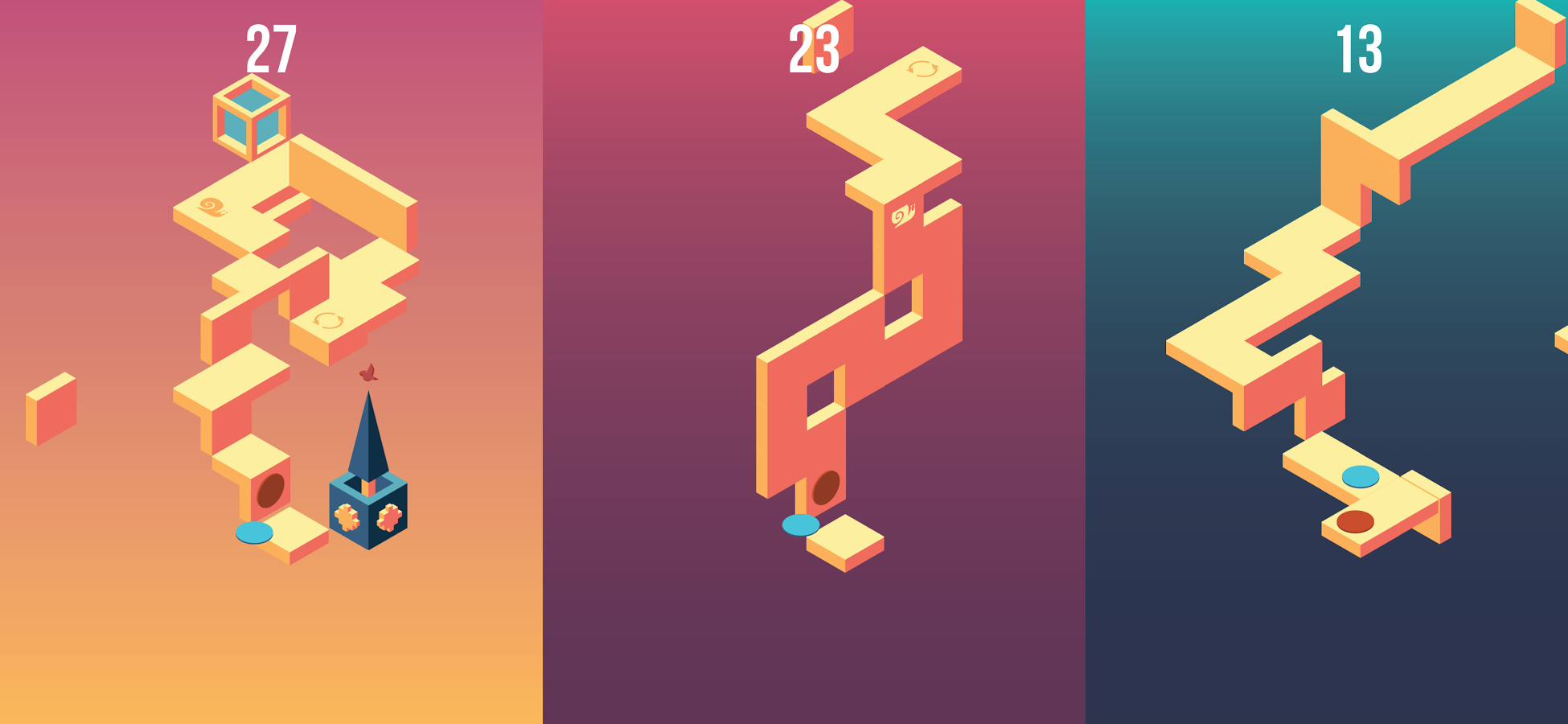The authors of The Tower and Skyward, Artem Merenfeld and Yaroslav Rudakov, told us about the work on minimalistic games, cooperation with Ketchapp and what you can count on at the same time.
Hi! I would like to start with, you know, a standard question, or even, rather, a request: tell us about AYA games – who are you, where are you from, why did you decide to make mobile games?
Artem Merenfeld
Artem: Greetings! We are modest guys from St. Petersburg and, in fact, there are only two of us. I am engaged in art, Yaroslav – programming. Game design in half.
We have been making games for quite a few years (by the standards of the young mobile industry, of course). One of the most famous titles we’ve worked on is Doodle God.
However, as it often happens, I wanted my own: so they took it and did it.
Yaroslav Rudakov
Yaroslav: Hello! In general, we first decided to make a mobile game, and AYA games appeared much later. It so happened that we started making the “Tower”, and when it was ready and it came to the publication, the question arose that our duo should be called something. In the course of lengthy disputes, the name was born, consisting of the first letters of our names – A-Ya. As it turned out, it sounds cool, is written symmetrically, and, according to Wikipedia, means “Art” in Japanese or “Miracle” in Arabic. It’s also the name of an Akkadian goddess. And then Artem drew a cool logo: that’s how we remained Aya studio, whatever that word means.
The most popular title of AYA games is an excellent minimalistic game The Tower, which looks very simple, at first glance, a game. But what is the price of this visual simplicity? How long, on what and by what team was the project done?
Artem: It would be cool to brag about some impressive investments, but, in fact, the price of developing this project tends to zero. They were engaged in it in their free time, without involving freelancing or other third-party specialists, so the only investments were their own time and vision. In general, when starting this project, we did not particularly plan to earn anything from it, so we did not lay any budget. I just wanted to create something fan-like and not to lose a good idea.
Can you share, in general, the history of the project, why they decided to do it, what unexpected difficulties they encountered during development, how they came to the publisher?
Jaroslav: The history of the “Tower” began almost 4 years ago, when my girlfriend started asking me for another token to play Stacker. That’s when I promised her to make a game that would be the same, but would work without tokens. It took about a week of free time to create. In the process, I decided that some points could be improved, and so soon the first version of the game appeared, which I called the “Tower of Babel” to myself, and it can still be viewed here: http://elegar.ru/tower /
The first version of the game
Two more years passed and I showed this game to Artem, with whom we were working together at JoyBits at that time. He liked the game and offered to improve it visually by drawing graphics for it. The “Tower” has been bothering me for a long time, because I felt potential in it, but at the same time I didn’t know what to do with it next, so I gladly agreed. By the way, when we started working on it together, we still didn’t know how we were going to publish it and were just going to put it on the market and hope for organics. At that time, of course, we did not expect serious earnings.
Artem: The main visual and software backbone was ready in about a month.
Well, then, as it usually happens, there were long, slow iterations of polishing (it took almost the whole summer). Admittedly, here we could even overdo it and spend more time than it was worth, but we set ourselves a clear task: “If you make a simple and casual game, then at the proper quality level.”
The big test was the need to control yourself and stop adding. There is always an opportunity to make the game even better: here add animated water drops, and here let the bird fly, etc. If you don’t stop in time, then these things can eat up a lot of the time and budget of the project (it’s good that we didn’t have a budget). It is especially fatal if such a “jamming” happens in the early stages of development.
Jaroslav: Together with Artyom, I undertook to make a game using Action Script (Flash) + Starling – simply because I like this language with speed and simplicity. Then the game was ported to mobile platforms using Adobe AIR. It is worth noting that I still do not regret this choice, although sometimes there were difficulties associated with choosing a platform. For example, due to the not very great popularity of such an engine, it became a problem to find the necessary libraries for various bindings, such as social, advertising, and so on, some had to be written by themselves or ordered. I know it’s customary to bury Flash now, but as you can see, he’s still alive!
Artem: “There were many options for how to complicate your life even more and delay the development.”
Artem: With the search for a publisher, the story came out almost fabulous. At that moment, we were not yet sure that we wanted to graduate through someone at all (since we did not expect anything grandiose, then why these extra difficulties). So I went to Top Free and decided, out of curiosity, to write to a couple of publishers who were at the top at that moment and who, in my opinion, were impressed by our style. These publishers were Noodlecake studios and Ketchapp (not so cool then, with just a couple of games, but already from 2048). Both of them showed great interest in the publication. Noodlecake are very nice guys, but we considered Ketchapp’s potential to be higher and accepted their offer. We did not lose!
When it comes to games published by Ketchapp, I am always tormented by one question. The fact is that all the projects produced by this publisher are stylistically very similar to each other, how is this achieved?
Artem: You may notice that most of the Ketchapp games are produced by only a couple of studios. And from game to game, a certain visual and gameplay style has already been formed by itself, which new games should correspond to. However, we try to go beyond these limits and make games that will raise the bar of quality, while remaining faithful to simple gameplay.
Jaroslav: Ketchapp doesn’t have any style guidelines or anything like that, if that’s what you’re talking about. And in general, these guys practically do not interfere in the development process. And the developer studios cooperating with them do not communicate with each other, as far as we know. So, the stylistic similarity is probably obtained naturally: the publisher chooses those games that fit their style. By the way, it doesn’t seem to me that our games are visually similar to other games published by the French.
All tower options
Continuing the publishing theme. I will say this, as it seems to me, Ketchapp is the only publisher who managed to put the “phenomenon” of Flappy Bird on stream: a viral game, cross-traffic, earnings from advertising… Can you share exactly how this system works?
Artem: It’s true. Ketchapp successfully released 2048 on iOS (without going into the tired carousel now, someone cloned something, etc.) and managed to properly exploit the traffic piled on them.
In fact, the whole secret is to release games regularly enough and start driving traffic through cross-promo to the next game in time. Flappy Bird pointed everyone to the niche of “tram games,” as Don Nguyen called it. Ketchapp managed to occupy it. As a result, a whole community of dedicated “ketchappers” has now formed, which flow from one game to another. And with each game their number grows. The ketchup virus is spreading.
I will ask a question that is not convenient for everyone: how many downloads did The Tower receive and earn within the framework of the system you described (if not exactly, then at least orders of magnitude)?
Artem: Now, in total, more than 11 million installations are released from the App Store and Google Play. We are still out on miniclip.com with a lot of features, but there are no installations as such, so we don’t count them.
The installation schedule on the App Store looks very dramatic. A powerful boost of Ketchapp traffic threw us to the tops of all the world’s tops, from where we scooped out almost everything we could, after which we fell, and since then the level of racing has been more or less stable.
On Android, the picture is completely different, Ketchapp had almost no traffic there, so all the installations came from word of mouth from iOS users. The mistake was too late launch, we underestimated the importance of Android and released there only at the end of September, when the main explosion was already over.
Without naming specific figures, I will say that with such a number of installations, you can count on income in hundreds of thousands of euros. We intentionally did not use any imposed free-2-play mechanics in the game, so with IAP, revenue is completely insignificant, almost entirely from advertising.
Free games are always games-services that constantly need to be updated. When it comes to more or less standard products, like match-3 or time managers, everything is usually clear: add new levels, new buildings. And how to update (and whether it is necessary at all?) projects like The Tower to make them live longer?
Artem: We have released a big update with several new beautiful towers. And to our surprise, the effect of it was minimal. True, he provided us with a feature on Google Play, which, however, also, even worldwide, does not give too much result (the peak on the chart is it).
The problem was that we released the update too late, when mostly loyal players remained, and those who should have been retained had already left. So I would advise such projects, if they release updates, then as early as possible in order to have time to capture and retain the players of the first wave.
Jaroslav: Game-as-a-service – it works for F2P, but for such small arcades like ours – it’s not necessary at all. In the case of small games that exploit simple game mechanics, it is easier and more profitable to make many games than to maintain one.
Your new game, Skyward, was released the other day. The project is stylistically very similar to Monument Valley, but the similarities end there. Please tell us about the history of its development!
Artem: Oh, yes, already on the night of the release, fierce holivars began on the TouchArcade forum, some for the fact that we all plagiarized, others for the fact that the game is completely not about that, and not ustwo invented a similar graphic style.
Undoubtedly, Monument Valley is a masterpiece and visually one of the best mobile games in a long time, I was inspired by it and other games of a similar style, such as Echochrome and Wonderputt. However, as it was noted, the gameplay has nothing in common with us, so many design decisions were made due to the specifics of the tasks being solved. This led us, for example, to the idea of collapsing and gathering maze levels.
The initial concept was two-dimensional, and it was boring, so we decided it was time to walk on the walls: and it immediately felt good.
Skyward was developed with the expectation that Ketchapp would also publish it, so the direction of development was clear from the very beginning.
Artem: “It was in the process of finding ideas for Skyward.”
Jaroslav: inspired by the success of the Tower, we, of course, immediately began to think about what we would do next. Artyom came across a game with the mechanics of walking circles somewhere. We were faced with a moral question about the possibility of making a brazen clone, but it disappeared when it turned out that that game cloned mechanics from an older flash drive. Initially, the game was supposed to be flat, with a view from above, then the idea was born to make an isometry, then Artem sent me another sketch that eerily resembled Monument Valley in color, and it became clear that we simply had to add Escher tricks there. We immediately realized that our game would be compared with the creation of ustwo and probably accused of plagiarism. In fact, plagiarism didn’t make sense to us: with traffic from a publisher like Ketchapp, we don’t need a similarity with a well-known product for promotion. But the picture turned out to be so beautiful that it was a sin to refuse it
USTWO recently published an infographic, according to which the development of Monument Valley cost the studio more than $ 800 thousand. Moreover, the company spent more than a year on the game. Many were surprised by such figures. How do you find yourself: is it a lot or a little? Are these figures comparable to Skyward expenses?
Artem: Armed with the experience of developing The Tower, we managed to build Skyward in a much shorter time. In addition, we worked on the same engine and were able to use a lot of developments on social, advertising and other components, which undoubtedly saved a lot of time.
As for the cost of developing Monument Valley, this is a delicate issue. It makes sense to judge the high cost of the project by how much it has repelled investments. $5.8 million with more than $800,000 invested, taking into account the enchanting and hitherto unprecedented feathering and coverage in the press. This, unfortunately, indicates that going to the premium segment for money is now quite futile.
Skyward
And the last question: now you are successfully engaged in minimalistic free games, and there is a desire to try yourself in some other direction. And if so, which one exactly?
Artem: We find the current direction incredibly satisfying! It allows you to focus on the fan that the game should carry. Since there is no need to motivate players to pay, you just need to provide them with a pleasant pastime that they will want to return to.
There is a dream: to make games so popular that you can use a perfect minimum of advertising in them.
This niche gives freedom of creativity, for which we began to make games on our own, so we plan to stay in it ;)
Jaroslav: I think we haven’t exhausted ourselves enough in the field of small games yet, and until we get cramped in it, we plan to stay in it. There are many advantages in small games, they fully follow the principle of “It burns brightly and burns out quickly.” This keeps you in good shape, stimulates you not to stop and does not have time to get bored. I like the rhythm in which we are working now and I hope that we will be able to keep it for quite a long time.
Thanks for the interview!

